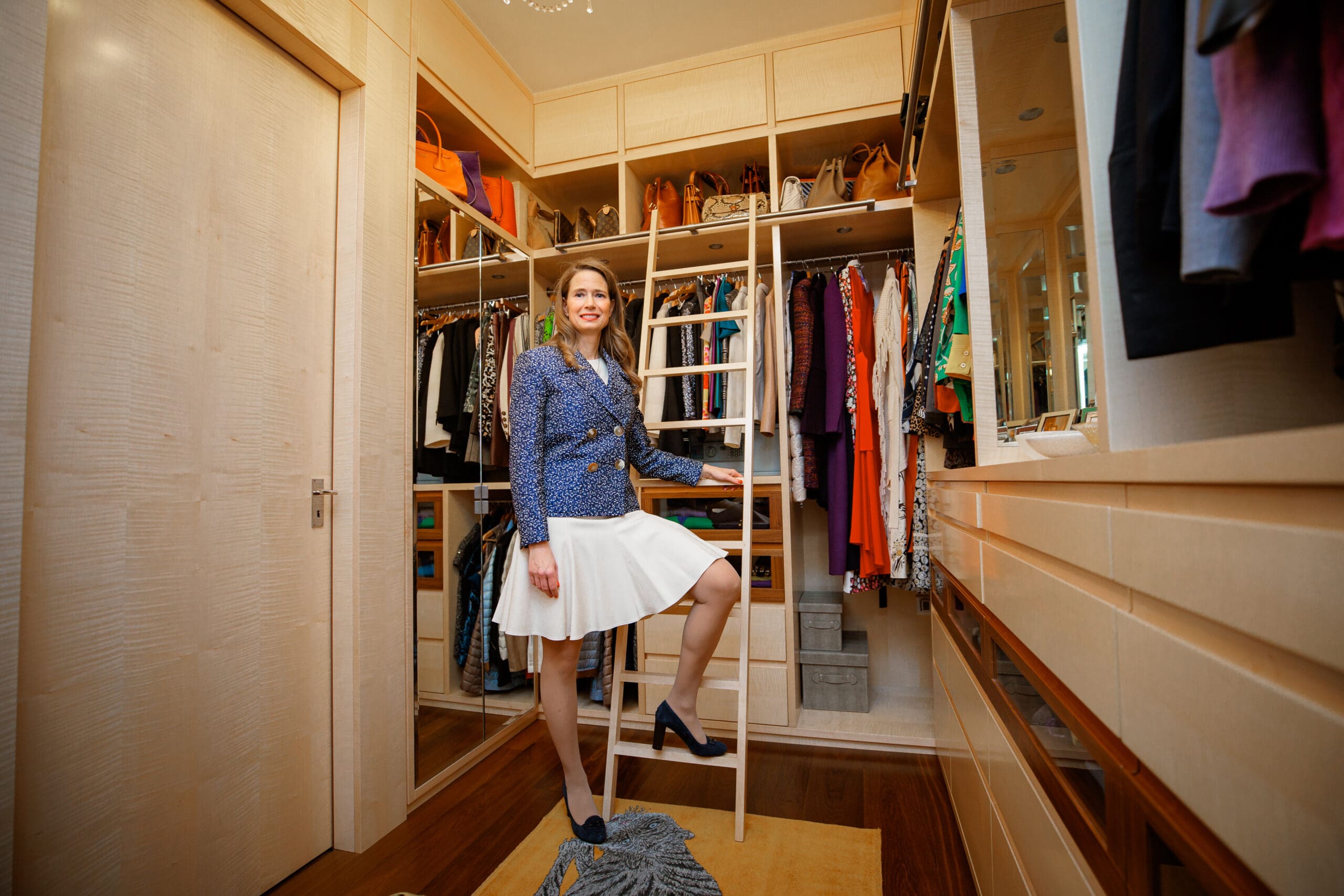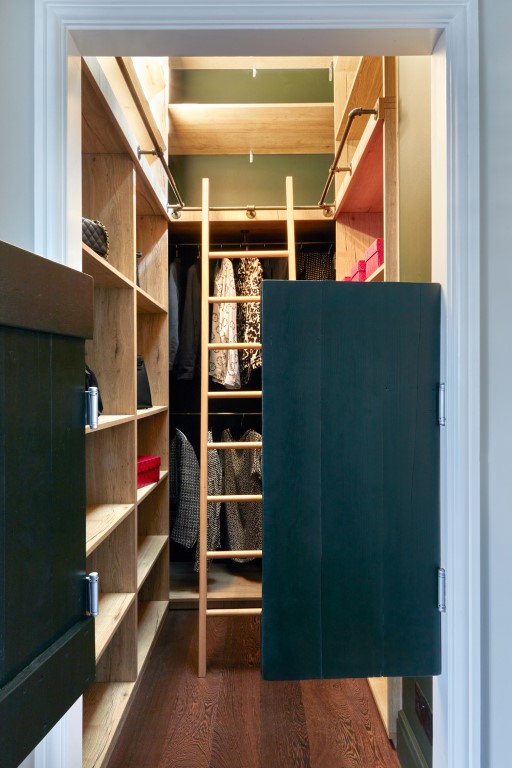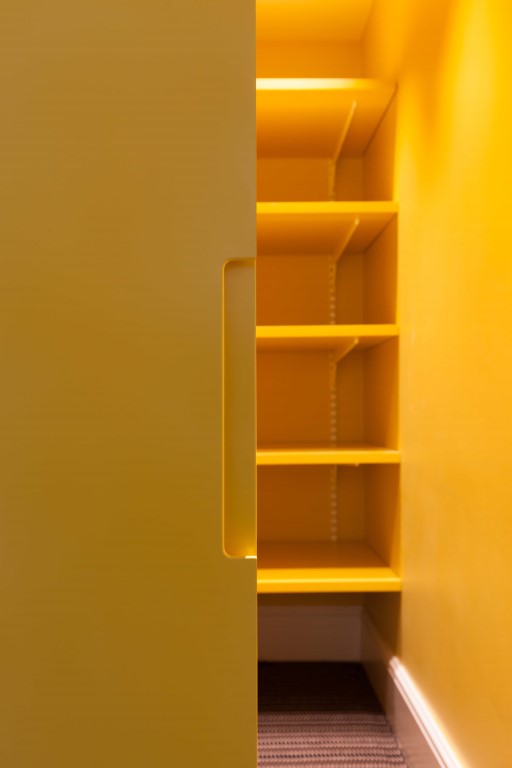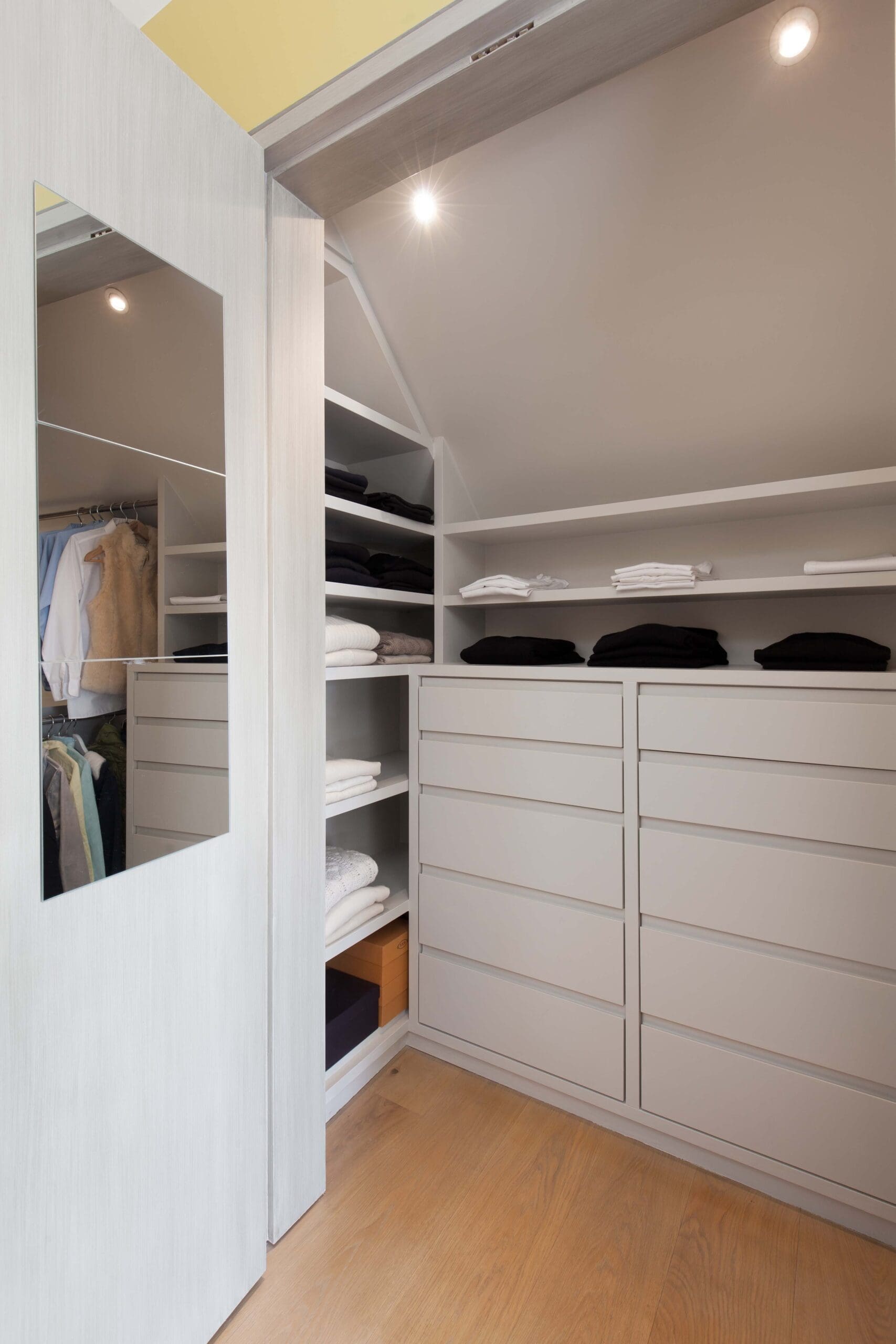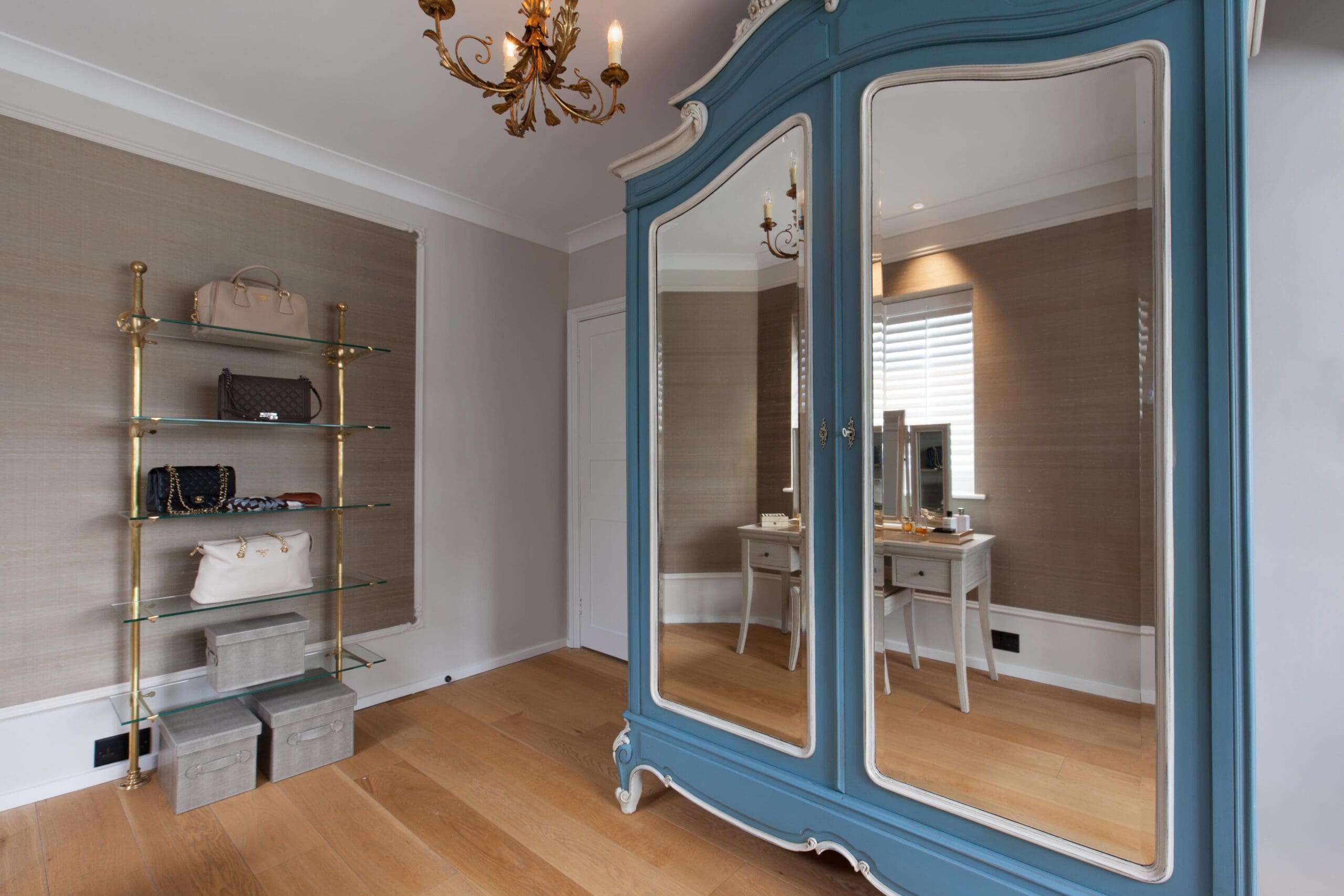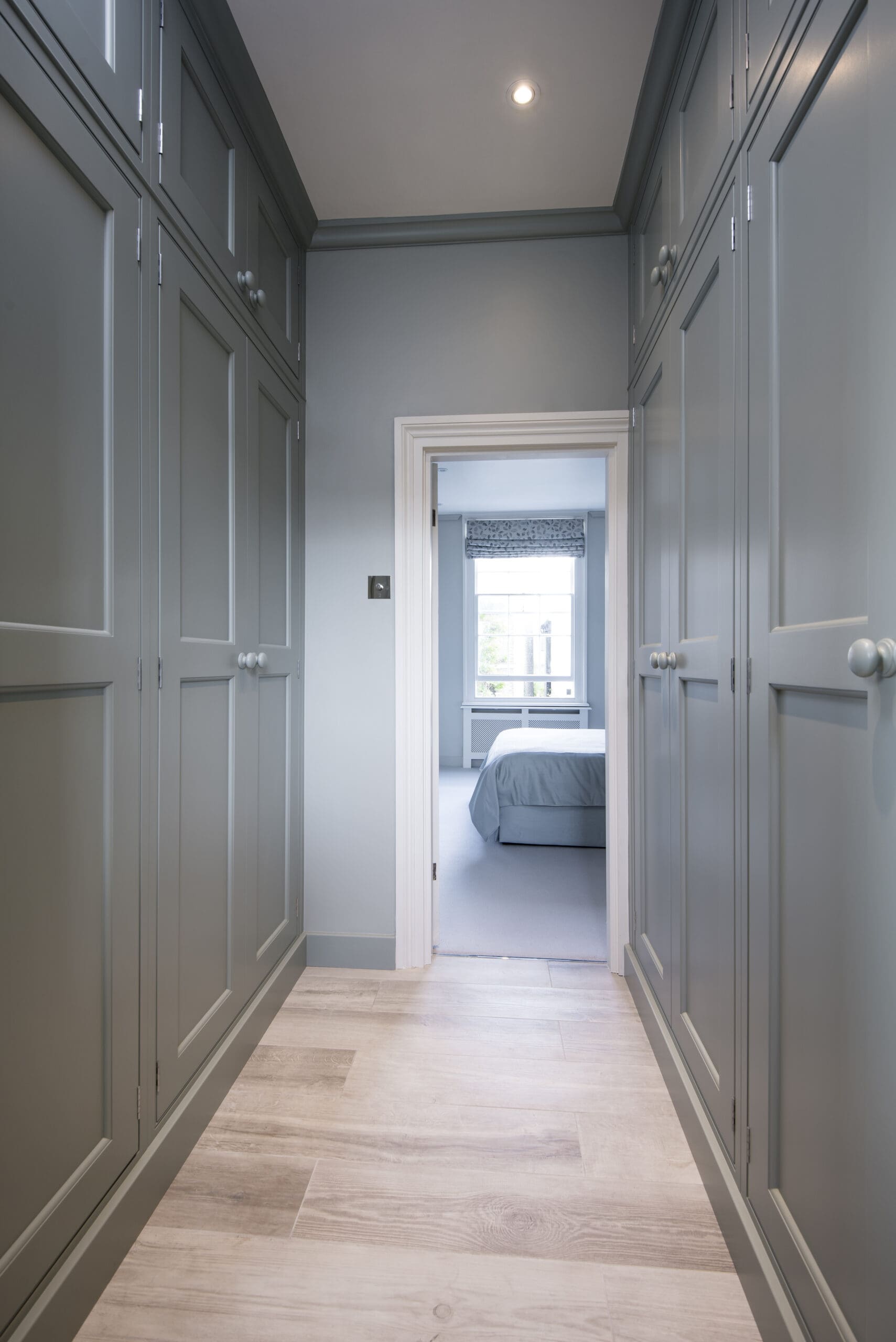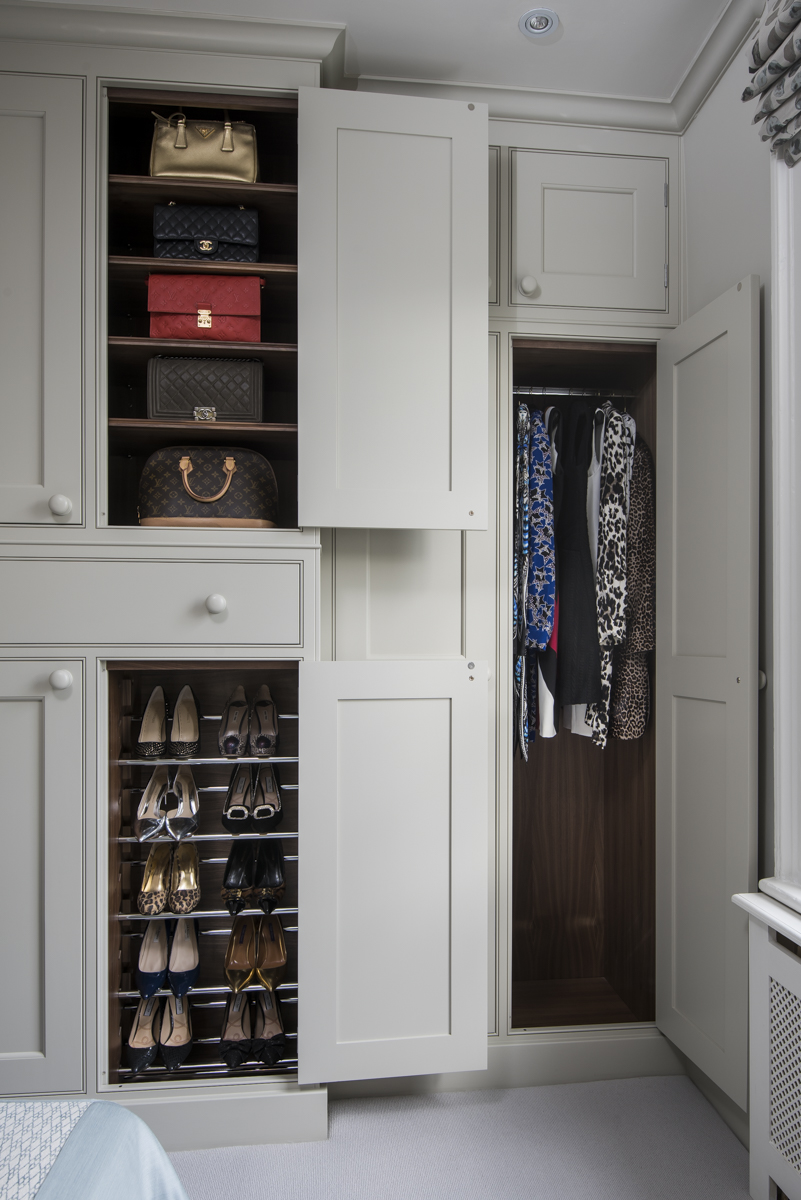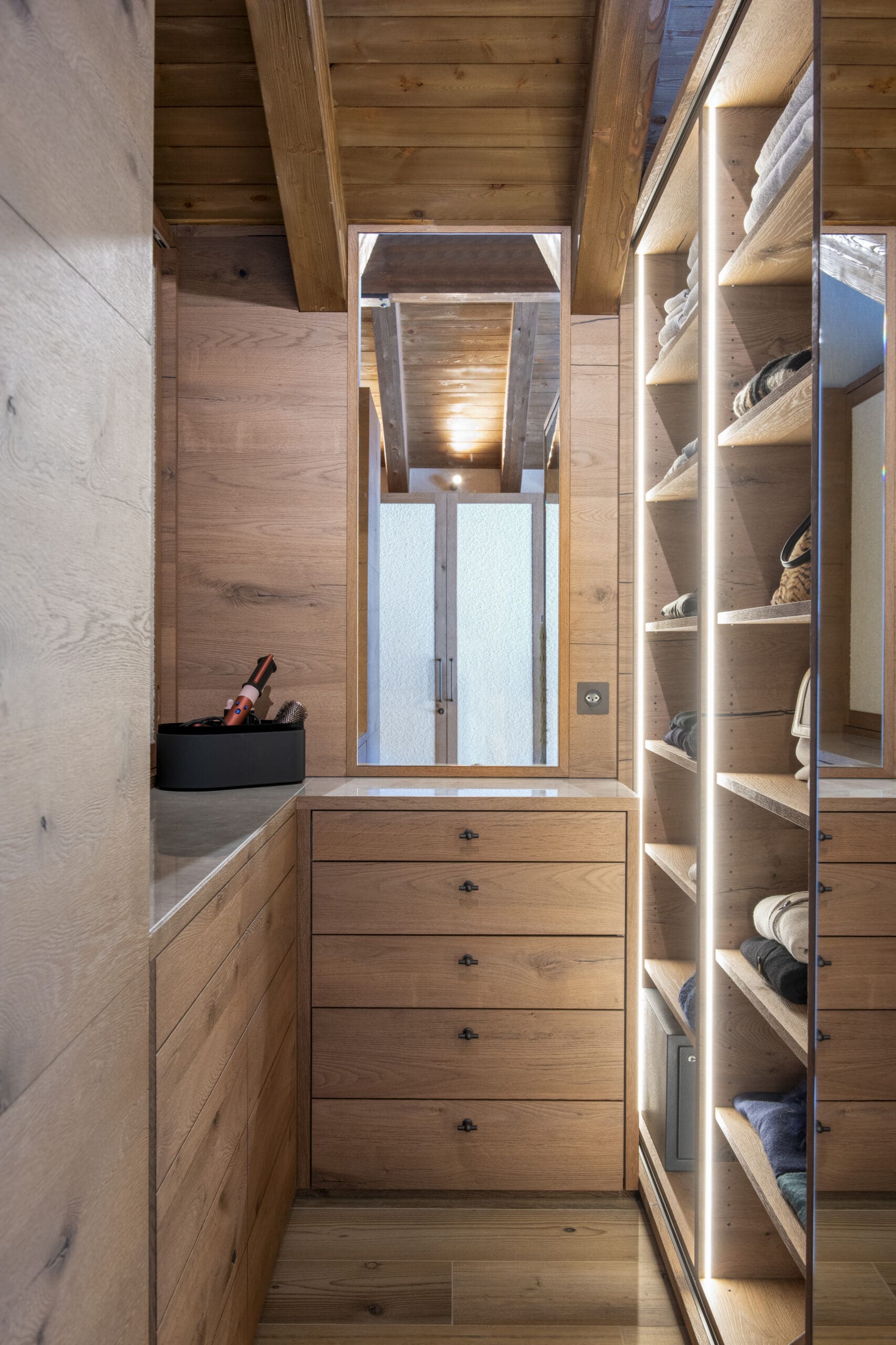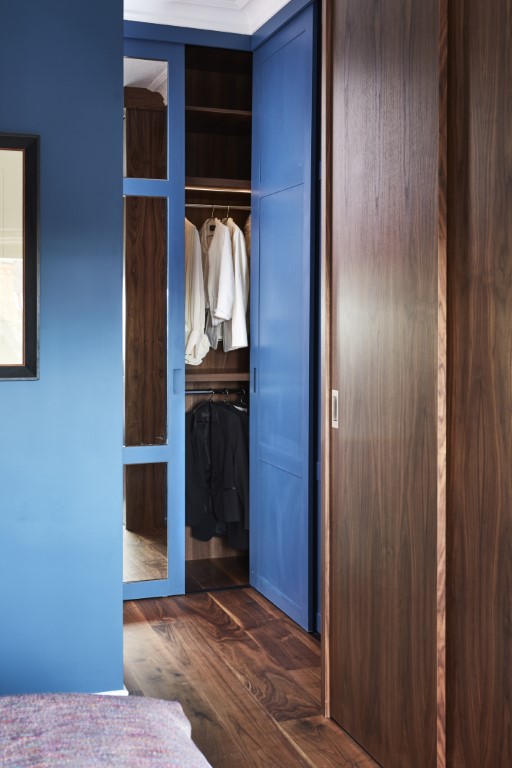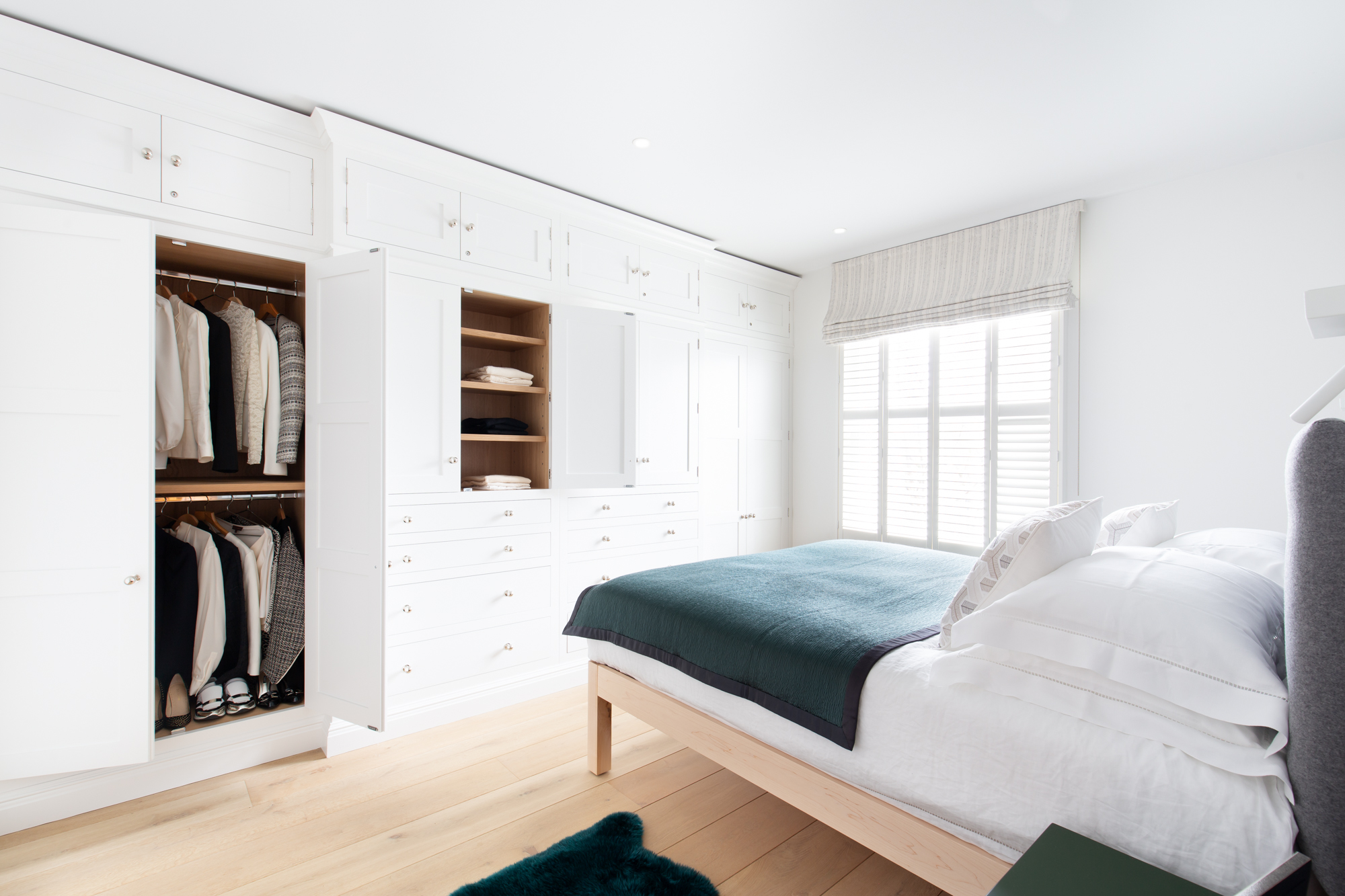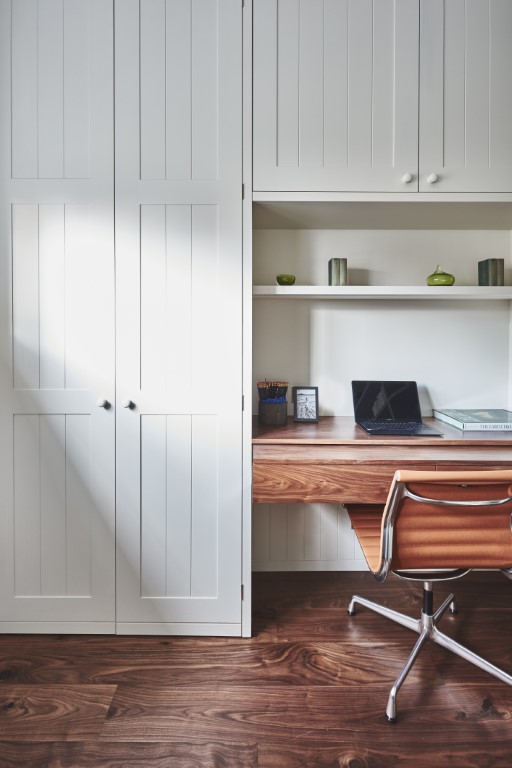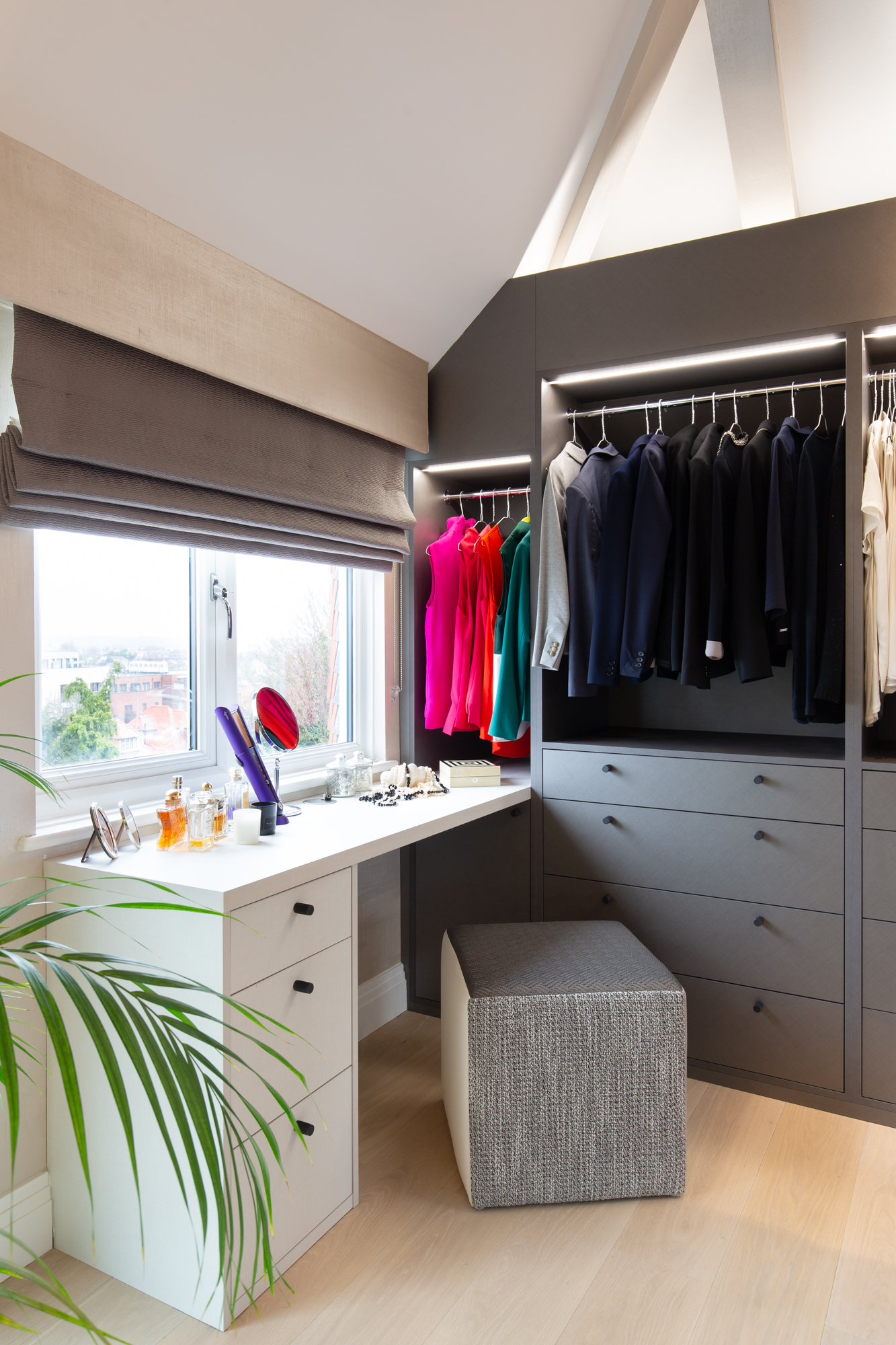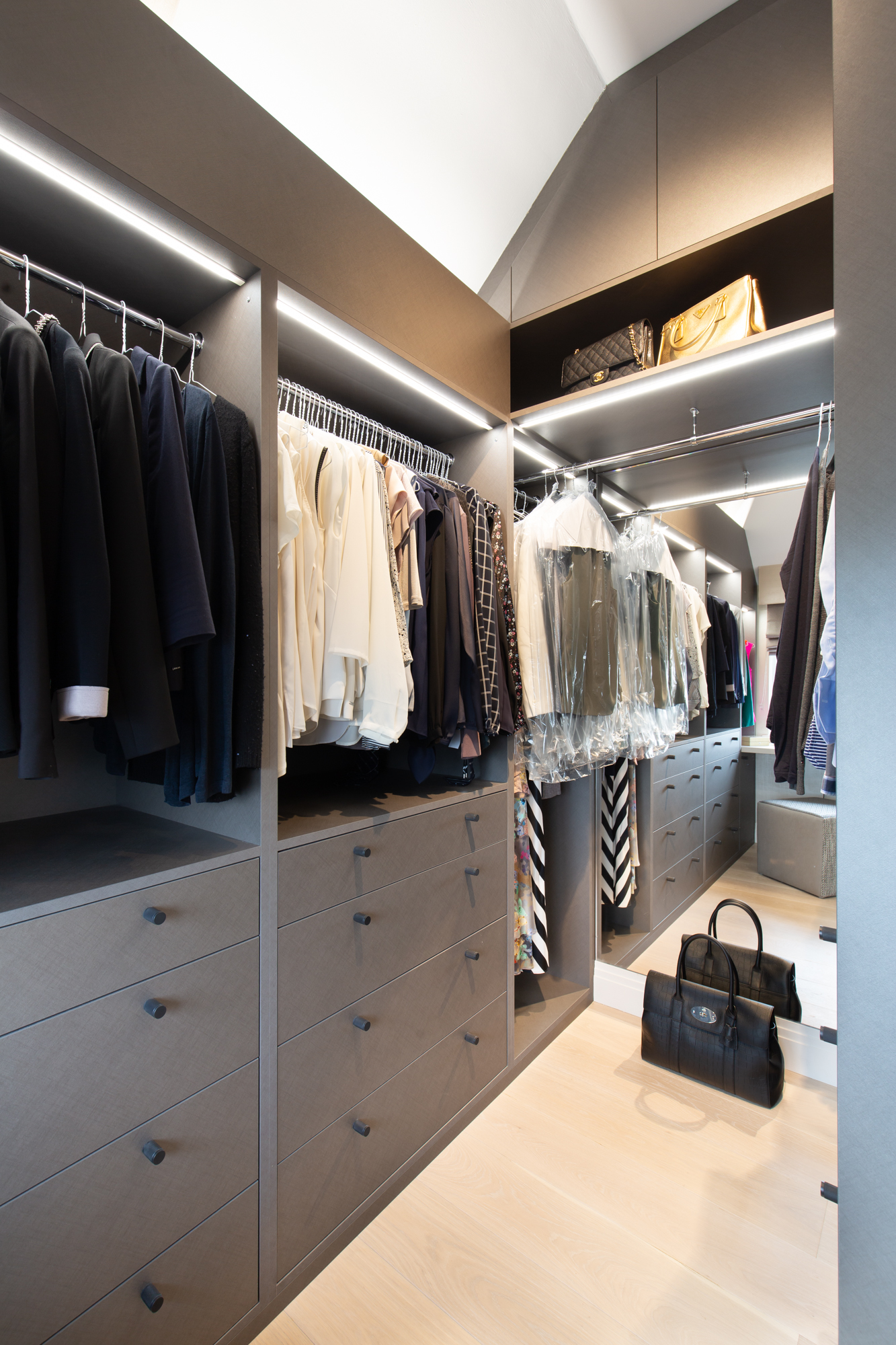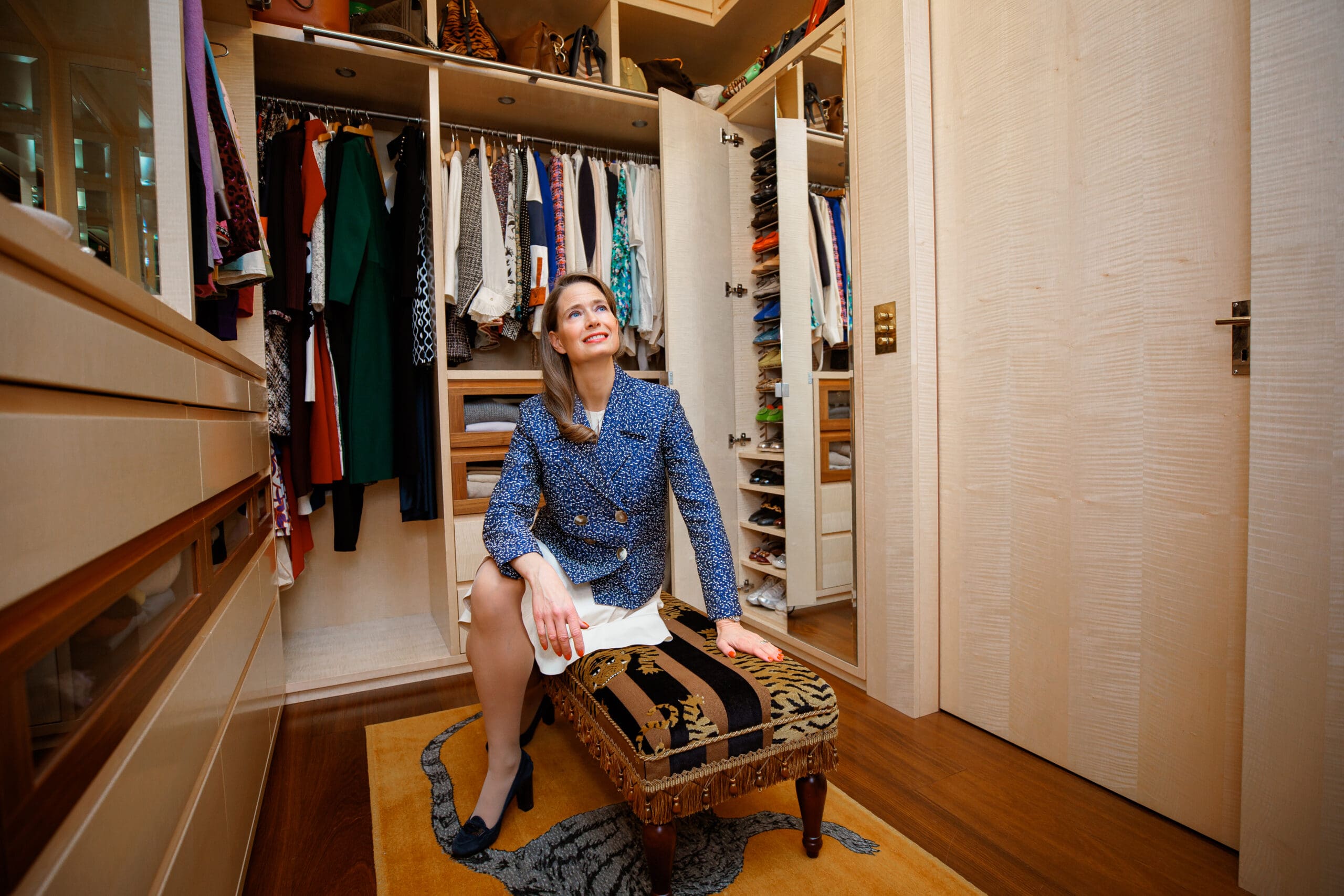
The daily ritual of dressing should be a delightful and inspiring experience, infusing your morning with a sense of confidence and anticipation as you prepare to embrace the day ahead. A thoughtfully designed wardrobe is more than mere storage; it is an elegant fusion of practicality and beauty, crafted to reflect your individual tastes and enrich your everyday routine—ensuring harmony, balance, and happiness for both partners. Whether your home graciously accommodates a luxurious walk-in dressing room, beautifully tailored fitted cabinetry, or you favour distinct, handcrafted furniture pieces, the perfect wardrobe solution harmoniously adapts to your space, embodies your unique style, and transforms an everyday necessity into a daily pleasure.
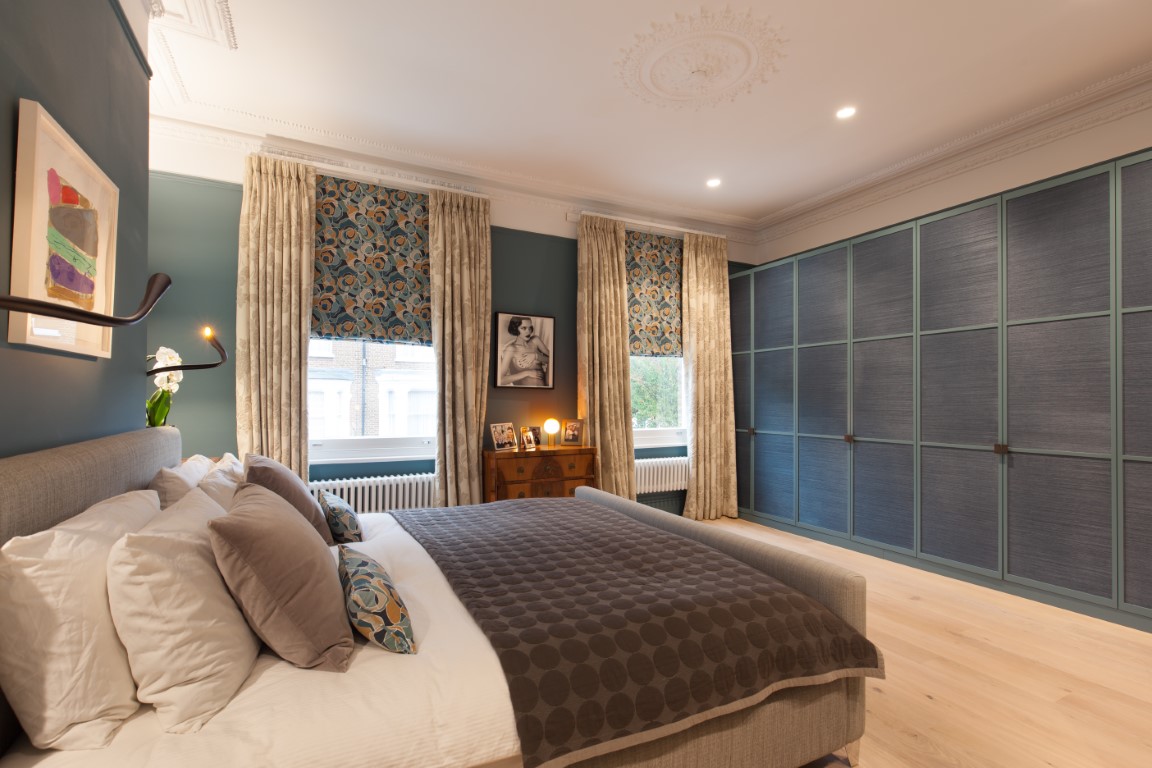
1. Understand Your Space and Needs
Before diving into design decisions, take a good look at the space you’re working with. Do you have an expansive master suite that can accommodate a grand, walk-in wardrobe, or are you working with a more modest space in need of smart storage solutions? Recording, analysing and understanding the dimensions of your room, along with the light sources and architectural features, will help inform your decisions. Remember, no area is too challenging; with tailored joinery and innovative creativity, even the most awkward corners and angles can be transformed into elegant and functional storage.
At a fundamental level ask yourself some crucial questions and reflect thoughtfully on your wardrobe essentials:
How much hanging space do you need? Do you have long garments like dresses or coats that require extra hanging room?
How many items need to be stored? Is your wardrobe primarily for hanging, or do you need ample space for folded clothes, shoes, accessories, and dedicated compartments to keep everything impeccably organised.
What’s your lifestyle? For a professional leading a demanding schedule, easy access to business attire and accessories might be paramount. Alternatively, a fashion enthusiast may need extensive shelving or customised displays for prized shoes and handbags. Couples often have divergent routines; one partner may rise early, necessitating an independent dressing area with direct access to wardrobes and ensuite facilities to ensure mutual comfort.
For this home we created a true oasis of elegance, a luxury space to enjoy getting ready and clothes are stored in a large separate walk in wardrobe.
Analyse your home. Consider your entire home strategically. Identify auxiliary spaces—such as guest bedrooms or underutilised rooms—that can elegantly store seasonal or infrequently used items. Incorporating fitted cabinetry in these areas can greatly reduce clutter in your primary wardrobe. I always recommend investing in beds with integrated storage; personally, my emperor-sized bed discreetly stores my seasonal wardrobe, neatly zipped and safeguarded with anti-moth sachets.
Declutter and organise your wardrobe. Thoughtful organisation is transformative. Declutter methodically, adopting Marie Kondo’s principles. For added transformation consider adopting an exercise I recently undertook myself: styling your wardrobe by complete outfits—this practical yet sophisticated method maximises space, ensuring each hanger elegantly presents ready-to-wear ensembles.
Do you have any slanted attic space. Evaluate unique architectural elements, such as slanted attic spaces, which can ingeniously accommodate shelving or ladder systems, thereby maximising vertical storage. Conversely, compact urban residences often benefit from streamlined cabinetry and concealed compartments, cleverly designed with pull-out drawers and discreet storage solutions to beautifully optimise every square inch.

Ultimately, defining your unique needs and style aspirations ensures a personalised wardrobe solution—one that enhances your daily routine, elevates your personal space, and feels meticulously tailored for how you dress, shop and live. Remember your wardrobe design and its contents will change over the years with your career, activities, hobbies and lifestyle.

2. Maximise Functionality in your Space
An exceptional wardrobe gracefully balances beauty with impeccable functionality. Drawing from decades of experience, I’ve consistently observed that true luxury emerges when aesthetics and practical solutions blend seamlessly. A thoughtfully designed custom wardrobe elevates your daily routine, ensuring every garment, accessory, and pair of shoes is effortlessly accessible and beautifully presented.
The complete reconfiguration of this floor and installation of fitted wardrobes allowed us to maximise every inch of storage potential.
Built-in Lighting: Good lighting makes all the difference. LED strip lighting can be integrated into shelves, above hanging rods, or within drawers to ensure everything is visible. For an added luxury touch, motion-sensor lighting can be installed, so your wardrobe lights up when you open the doors.

Hanging space: A wardrobe should include an appropriate amount of hanging space for long items (like dresses or coats) and shorter items (like shirts or trousers). Mens and ladies clothing will vary in lengths. Typically you need a minimum of 90cm height for short hanging but if you can stretch this to 100 or 110 cm you will have more flexibility on the garmets you can fit without creasing the bottom. For long hanging this will vary between 150 to 180cm depending on what you are storing. Always consider your total unit height and whether to plan a double of short hanging with or without a shelf inbetween. Personally I like fixing the upper rail as high as possible as any space above can only be used by climbing on steps. I fix my top rails at 220cm so I can just about reach it but you need to test what you are comfortable with. I also like maximising internal height of storage so if I am fitting wardrobes into rooms with 280cm or more ceiling height I might limit the door height to 230cm but then construct the internal carcass of the unit to fit right up to the ceiling.
Drawers: A section for folded clothing is essential for keeping your items neat. Shelves are a traditional option and they should be adjustable. Drawers work wonderfully for accessories, scarves, and small clothing items like sweaters or jeans. Ensure that you design shelves and drawers in varying heights so garments remain impeccably organised and readily accessible. Inside the drawers you can devise of varying dividers ideally make them flexible to you can change the spacing, this will keep your interiors organised.
Varying Depths: Typically wardrobes ought be 60cm deep internally. You can get away with 55cm interiors. If you are designing a bespoke joinery wall of wardrobes you can vary the depth of the units, maybe this will already be necessary if you are fitting them along a chimney wall. Folded clothes do not require a typical 60cm depth. In many of the projects I have designed over the years I use the breakfront style, that means the central part sticks out slightly and the sides are less deep, this is visually pleasing and less monotonous. It also addresses the practicality of creating units with the necessary depth, 60cm for hanging and 40cm for folding on shelves and drawers, and even 30cm can be sufficient for bags and shoes.
Shelves for Shoes and Bags: Consider custom shelves for shoes, hats, handbags, and other accessories. Dedicated shelves can be arranged in a way that displays your prized possessions as well as providing storage.
Hang your boots: I took inspiration many years ago from a shoe store where boots were hung on rails with clips. As I have a slight boot fetish I have dedicated three meters of hanging rails in a corridor wardrobe to just hang and display all my boots.
Central island: In larger walk-in wardrobes, a central island provides additional storage and display space. This is perfect for jewellery, watches, or perfumes. It can also be a great spot for folding clothes or prepping your outfit for the day.
Pull-out racks: For ties, scarves, belts, or jewellery, pull-out racks are a space-saving solution that helps keep everything organized and easy to access.
Always add mirrors. You can never have enough. Ensure you can see yourself fully.
For this Master bedroom we reconfigured entirely the walls and created a walk through dressing area before the Ensuite.
3. Create a Harmonious Design
Your wardrobe should feel like an extension of your home’s overall style. Whether your home leans modern, traditional, or a hybrid of both, your wardrobe design should blend seamlessly with the rest of the space.
Materials matter: Choose materials that reflect the overall style of your home and consider your location! Solid woods like walnut, oak, or maple offer warmth and timeless beauty. You can chose from natural or manmade veneers or stained oak . Painted doors are a classic choice and often paired with panelled designs from simple shaker frames to elaborate raised and fielded panelling. I have filled panels with silk wallpaper or mirror. High-gloss lacquered finishes, glass panels, and polished metal elements add modern flair and sophistication. A soft and fun touch is to fit gathered fabric behind glass or metal weaves. Slatted door panels or moroccan moucharabieh panels are practical for humid climates where wardrobes need to stay aired.
Mix the textures:In this chalet some doors are solid wood which creates a different effect from panelled doors which could be fitted with boucle fabric while another room has wardrobe doors entirely covered with leather.
Finish quality: The finish you choose for your wardrobe can significantly impact the room’s vibe. A matte, soft-touch finish will lend a cozy, luxurious feel, while a high-gloss finish makes the space feel sleek and modern. In chalets we use a lot of natural wood but even those can vary wildly in the effect created between light modern calm grained oak to reclaimed dark birch or pine.
Soft textures: For added luxury, consider including velvet-lined drawers or leather inserts for shelves. Or gathered fabric panels behind glass fronts. These soft finishes elevate the design and give the space a rich, tactile quality.
It’s important that the design complements your bedroom or dressing area. If you’ve got a modern home with minimalistic furniture, then a wardrobe with clean lines, neutral finishes, and glass accents will create a cohesive look.
In these spare bedrooms we designed generous wardrobes which offer ample space for guests but also house some of the owners surplus clothing.
4. Incorporate Innovative Storage Solutions
The beauty of modern wardrobe design lies in the innovative storage solutions that go beyond the traditional wardrobes of our parents with hanging rails and shelves.
Sliding doors: Sliding doors are a great way to save space and add a touch of glamour. They can be designed with mirrors, frosted glass, or even frosted wood finishes to suit your style while allowing you to access your wardrobe easily. Beyond simple sliding systems where one door sits permanently in front of the other , we have used sophisticated push in/push out systems where both door leaves are stored level but they cut come forwards/backwards to allow the sliding across.
More on doors: you can use pocket doors or bifold hinges, certainly soft closing hinges and hinges that open more than 90 degrees or corner door systems. There are hidden hinges and visible butt hinges, depending on the style you want to achieve. For something unusual, we have used saloon swing doors to enter small spaces or you can fit barn doors on rails as a feature.
Pull-out systems: If you have a small closet, consider pull-out wardrobe systems that help you organize your clothing in a more compact manner. Pull-out racks, drawers, and shelving systems make it easy to access everything, even in a tight space.
Ladder systems: If you are lucky to have a high ceiling and you are designing a bespoke wardrobe system, then invest into the additional ironmongery and design your personal ladder and rail. You can find off the shelf systems but going bespoke allows you ultimately style flexibility and comfort: ensure you can hook the ladder into a vertical stow away position and it has a comfortable angle for climbing and wide flat treads (you will be using it barefoot so ensure it is kind to your feet)
Mirrored panels: Mirrored panels not only save space but also add a glamorous, luxurious feel to the wardrobe. They can also be used to reflect light and make the room feel larger.
Walk-in wardrobe: For those with ample space, a walk-in wardrobe is a real showpiece. It provides the opportunity to treat your clothing as a curated collection, beautifully displayed on open shelves or in a minimalist wardrobe system. This is where you can add a vanity area with a full-length mirror, perfect lighting, and a chic seating area for dressing. But even awkward nooks can become walkin spaces as I demonstrate with images above where we squared off a room by installing a partition wall to hide the slanted roof space which became a walkin wardrobe using every inch of space.
In this Master suite we integrated a vanity table with all the luxurious details to store makeup, accessories and hairdryers and curlers ready and plugged.
5. Finishing Touches
The final touches are what truly make your wardrobe feel special. These are the little elements that elevate it from merely functional to a luxurious experience every time you step inside or touch a drawer:
Security: consider fitting a hidden drawer and a fixed safe. Adding locks to some doors or even to the door of the dressing room is important. We have also fitted safe escape rooms behind wardrobes.
Custom handles: Instead of generic handles, opt for bespoke hardware in finishes like brass, marble, or polished nickel. These small details elevate the entire wardrobe, giving it a designer touch. I often source antique vintage sets of handles to really give a unique finish.
Luxury accessories: Accessories like padded jewellery trays, tailored shoe racks, and stylish storage bins for scarves or bags can be included. Custom lighting in drawers or behind shelves provides a refined look, while velvet lining in drawers keeps your delicate items safe and looking pristine.
Designing your dream wardrobe is an exciting and rewarding project that blends creativity, functionality, and luxury. Drawing upon two decades of designing distinctive, luxurious spaces, I’ve learned that the most exquisite wardrobes are those which elegantly respond to your daily rituals, lifestyle, and personal tastes. By understanding your space, prioritizing functionality, and integrating innovative solutions , you’ll create a wardrobe that not only stores your clothing but also enhances your lifestyle. Remember, it’s the thoughtful details that ultimately transform the ordinary into the extraordinary. Your wardrobe isn’t merely a practical space; it’s a daily indulgence, elevating your everyday into moments of refined delight.
Stay inspired, stay sophisticated
Love, Claudia
